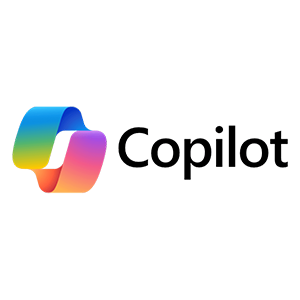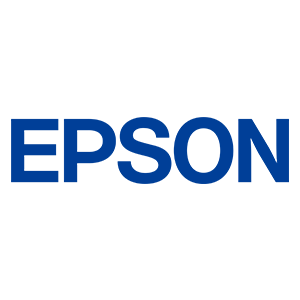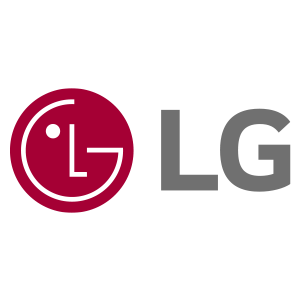
LaaS for Schools and Colleges
A single source workplace partner
single source supplier
LaaS for Schools and Colleges
Education Institutes and Schools must balance limited budgets while creating a safe and productive environment for their students.
School day activities, different methods of teaching, and increased use of technology have strongly developed in past decades. It’s high time that the lighting is updated as well.
LED lighting solutions significantly support today’s school environment. Upgrading to LEDs will decrease energy and maintenance costs, while also improving campus safety for students, faculty, and staff.
The positive influence of LED light on the ability to concentrate, well-being, mental health, and safety has long been scientifically proven.

1. Improved Student Concentration and Performance
One of the most important benefits of installing LED lights in classrooms is the improved academic performance of students. Several studies have found that LED lights can be tuned to imitate natural light, which is known to improve concentration and boost a student’s learning ability.
- Improved Reading Speed: The students increased their reading speed by 35%.
- Improved Concentration: The students reduced their errors by 45%.
- Reduced Hyperactivity: When teachers gave students mathematical problems to solve, they used the Calm lighting scheme, which reduced the students’ hyperactivity by an astonishing 76%.
2. Energy Savings
Schools that choose to install LEDs won’t just see increased academic performance — they’ll also enjoy decreased energy bills. Unlike fluorescent lights, LEDs are free of mercury and completely recyclable, which makes them the most environmentally friendly lighting option. LEDs consume less energy than any other type of lighting available on the market, meaning that your energy and maintenance costs will be substantially reduced. Switching to LEDs can reduce your energy consumption by 75 to 80%. By adding reflectors, sensors, lenses, timers, and other options, your school can increase its savings even more.
3. Enhanced Lighting Controls and Flexibility
Classrooms that are equipped with lighting controls can match their colour temperature to certain times of the day/specific activities. These tuneable pre-sets can be adjusted for activities that require a sense of calm or attention, as needed. However, even more basic features, such as dimming, are being implemented in less than two percent of classrooms, which can have significant impact on students’ learning experience.
4. Health Benefits
Fluorescent bulbs aren’t just wasteful — they can also harm your health and well-being. Replacing fluorescent lights with LED lighting in educational environments is associated with the following health benefits:
Improvement in Light Quality
Improvement in Visual Performance and Comfort: Glare and flicker are two issues associated with outdated lights and can affect the teachers as well as the students. Glare often causes you to blink, squint, or look away and can be caused by one of two things — excessively high luminance or excessively high luminance ratios. In both scenarios, the students’ visual performance will decline as their comfort levels decrease. Two types of glare exist — disability and discomfort glare. Discomfort glare refers to the pain associated with viewing glare, whereas disability glare reduces visibility. Disability glare occurs when light is scattered throughout the eye, which then reduces the retinal image’s luminance contrast.
Less Irritation for Autistic Students: Autistic students are especially susceptible to the harmful effects of fluorescent lighting, including increased sensitivity to direct fluorescent lighting’s sub-visible flicker. This can lead to eyestrain, headaches, and an increase in repetitive/compulsive behaviour. LEDs, on the other hand, are resistant to the flicker effect when they are completely dimmed, which makes them an excellent choice for special education student bodies.
Reduction in Hyperactivity: Colour temperature has also been shown to play an important role in students’ health/performance. Studies show that cool colour temperatures can improve the behaviour of students with learning disadvantages or hyperactivity disorder. This cool light colour allows them to concentrate on projects and tasks more effectively. Hyperactivity is related to stress conditions, which can be aggravated by the radiation produced by fluorescent lights. When exposure to this radiation is decreased, performance and behaviour improve.
Improvement in Circadian Rhythms: The optimal function of the body’s circadian rhythm depends on the right kind of light. This vital process helps your body determine when you should wake up, go to bed, and even focus and relax. If students are regularly exposed to lighting that doesn’t match their circadian rhythm, it can disrupt their sleep-wake cycle. And students who aren’t getting enough sleep are at increased risk of focus and performance-related issues.
Improvement in Mental Cognition: Exposure to cooler colour temperatures during the morning hours is known to help with morning wakefulness, contributing to improved concentration and performance in school.
Improvement in Mood: Light levels are also important in the classroom, and bright lights are used to treat several types of depression, including Seasonal Affective Disorder (SAD). SAD affects people during the coldest months of the year when people don’t get enough sunlight exposure during the day and is a common problem in schools and offices. If you spend too long in a room that’s dimly lit, it can affect your mood and lead to depression.
5. Reduced Maintenance Costs
Every classroom, hallway, bathroom, and office needs sufficient lighting, and the number of bulbs maintenance workers must replace can number in the thousands. If a school uses fluorescent bulbs, maintenance crews may spend a significant portion of their working hours replacing lights, especially when those lights are not easily accessible, like those found in gyms, auditoriums, and other spaces with high ceilings. However, since LED lights have a significantly longer lifespan, your crew can spend less time maintaining/replacing bulbs when you switch to LED.
6. Other Economic Benefits
Shorter Payback Period: An educational facility’s payback period is usually 5 – 7 years. Throughout an LED bulb’s lifespan, savings can reach millions of pounds, which helps educational facilities and school trusts better adapt to their budgetary constraints.
The Ability to Replace Any Type of Light: LED lighting can replace many different types of lights, including fluorescent lights, fluorescent tubes, high hats, and can lights. LED lights can be suspended, recessed, or flush-mounted on walls or ceilings. Regardless of the type of lighting you have in your school, LEDs can replace them.
7. Natural Light & Wellbeing
Experts have long understood the effects of artificial lighting on the human body. When we spend time in a room with ultra-bright, cool-toned light during the daytime it can wreak havoc with our internal body clock, making it more challenging to sleep at night and feel awake in the daytime.
It isn’t just the lux level that matters, it is also the hue, colour temperature, and amount of natural light that make a difference to our well-being. A Lutron smart lighting system is designed to overcome the well-being pain points of artificial lighting.
Lutron’s daylight automation settings can be timed to mimic the outside natural light levels and colouration as closely as possible, using precise sensors and the built-in astronomic clock. This setup essentially works in the same way as a SAD lamp, just on a much larger scale.
Occupancy sensing lights, daylight harvesting lights, full-range dimming lights, and software-controlled systems are our recommended smart controls that would greatly benefit your origination and are included within our Managed LED Agreement (LaaS).
- Occupancy Settings – these smart controls use motion, presence, and absence detectors to identify movement within a room, before triggering on/off the lighting system. These sensors are perfect for classrooms and offices due to the amount of going in and out and occurs these rooms.
- Daylight Harvesting Lights – the main advantage of this lighting control is that they work alongside natural daylight to provide a consistent, energy-efficient light throughout the day. This lighting control is a seamless fit for a classroom or workplace.
- Full-Range Dimming Controls – not only will dimming controls help preserve the life of LED lights they also provide a silent and smooth operating system that will stop screen glares during presentations or computer rooms.
- Software-Controlled System – this service is provided through mobile & tablet applications to allow the user to control the LED lighting system on the go. A major benefit schools get from this software is that multiple users can be added to control different zones of a building.
Trusted by Our Suppliers
As a preferred partner to the world’s leading companies, we marry our expertise with the best technology there is to provide the most appropriate solution for your business.
Our higher-level accreditations recognise our superior service levels and our proven ability to understand which technology will deliver the very best results for our clients.
In turn, we receive their highest levels of commercial and technical support – benefits that we pass on to our clients.
Global Reach – EMEA, APAC, AMER
Fully Agnostic Workplace Technology Partner
Sustainable Technology and Services































































































GET SOLUTIONS FAST!
Get a quote from the experts
Blog Posts
Recent Posts
-

Tips on Choosing Voices and Music to Create a Great Caller Experience
Many customer journeys may start online, but when they are unable to…
-

Tips on How to Use On-hold Marketing Effectively
All too often companies underestimate the power of their telephone system. On…
-

Energy Savings – EaaS
Energy as a Service (EaaS) is an innovative business model that transforms…
-

Should I provide my staff with company mobiles?
The decision to provide business mobile phones to employees depends on various…
-

Should I get Broadband or a leased line for my business?
When deciding between broadband and a leased line for your business, consider…
-

Why use an Energy Broker for my business electricity and gas renewal?
An energy broker plays a crucial role in helping businesses navigate the…












